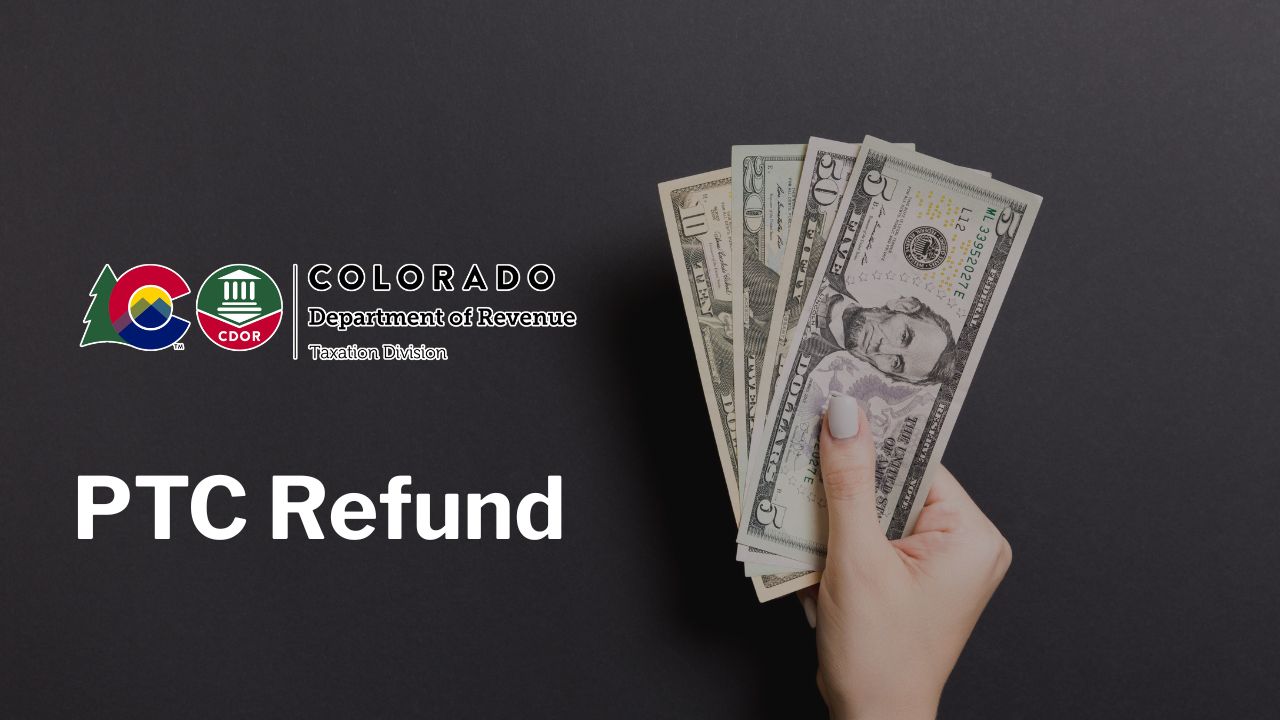Living on a fixed income can be challenging, especially when housing and heating costs continue to rise. For seniors and individuals with disabilities in Colorado, there is a valuable program designed to ease that burden, the Property Tax, Rent, Heat Rebate, commonly known as the PTC Rebate. This rebate offers financial relief to qualifying residents who have paid property taxes, rent, or heating bills during the tax year.
The program has been supporting Coloradans for decades, allowing many to stay in their homes more comfortably. Understanding how the rebate works, who qualifies, and how to apply can make a significant difference in a household’s annual budget. This guide provides a clear explanation of the PTC Rebate, designed especially for seniors and disabled residents who want step-by-step help.
What Is the Colorado PTC Rebate?
The Colorado PTC Rebate is a refundable tax credit that returns a portion of housing-related expenses to eligible residents. The rebate is not a loan or taxable income, it is money given back to qualified individuals to help offset costs they’ve already paid, including property taxes, rent, and heating bills. The rebate is issued even if a person owes no income tax, which makes it particularly useful for retirees or those with low earnings.
Unlike other tax credits that simply reduce tax owed, the PTC Rebate is paid directly to the applicant, typically in multiple payments throughout the year. This extra cash can go a long way toward paying for groceries, utility bills, medications, or other daily essentials.
Who Is Eligible for the Rebate?
To qualify for the rebate, an individual must meet certain age, income, and residency requirements. The program is specifically aimed at residents who are either senior citizens or people living with disabilities. To be eligible, the person must have lived in Colorado for the entire tax year. In most cases, applicants must be at least 65 years old by the end of the year, though surviving spouses aged 58 or older may also qualify. Additionally, individuals who are legally disabled for the full year may also apply.
The applicant must not be claimed as a dependent on someone else’s federal tax return. Income is another key factor; only those below a specific annual income threshold will qualify. For a single person, this limit typically falls under $18,000, while married couples filing jointly may qualify if their combined income is under approximately $25,000. These figures are adjusted from time to time, so it’s important to refer to the most current year’s guidelines when applying.
How Much Can You Receive?
The amount received through the PTC Rebate varies depending on the applicant’s income and expenses. Generally, the maximum rebate includes up to $600 for property tax or rent paid and up to $192 for heat assistance. Together, the total annual rebate can reach around $792.
In certain years, depending on available state funds and the timing of the application, some residents may also qualify for additional payments. For example, those who apply early may be eligible for the state’s TABOR refund, a separate rebate that could add an extra $800 for individuals or $1,600 for married couples. This bonus is only granted to those who file their PTC Rebate application before the spring deadline.
These combined amounts can provide over $1,000 in total support for some households, making a meaningful impact on their annual budget.
How and When to Apply
Applying for the PTC Rebate is a straightforward process, though it does require gathering documents and filling out forms accurately. The application must be submitted using Form 104PTC, which is available online or through the Colorado Department of Revenue. In addition to this form, applicants must also complete an affidavit that verifies lawful presence in the United States.
Applicants need to include documents showing proof of income, such as Social Security statements, pension benefits, or other financial documents, as well as proof of housing expenses. This might include rent receipts, property tax bills, or utility bills that show heating costs.
The timing of your application affects how and when payments are issued. Those who apply by mid-March can receive four equal payments, starting as early as mid-April. Applications received by mid-June may receive three payments, while those filed later in the year receive fewer installments. If an application is filed by December 10, the payment will typically be made in one lump sum by the following January.
Applicants can choose to receive the rebate by check in the mail or through direct deposit, with direct deposit often being the faster and more secure option.
Payment Schedule Based on Application Date
While most rebates are paid out over the course of the year, the number of payments depends on when your application is processed:
- Those applying by March 10 will receive four payments starting in April.
- Those applying by June 10 will get three payments starting in July.
- Applications by September 10 are eligible for two payments beginning in October.
- Submissions made by December 10 will receive a single payment in January.
Filing early increases the chances of receiving full benefit amounts and qualifying for the TABOR refund bonus. It also provides financial support earlier in the year, which can be helpful for seasonal expenses like heating during the winter months.
Helpful Reminders for a Successful Application
To ensure the process goes smoothly, applicants should gather all necessary paperwork before starting. This includes identification, income records, and proof of housing or utility payments. It’s also a good idea to keep a copy of everything submitted, in case any follow-up is needed.
Seniors who are unsure about the application process can get help from family members, local senior centers, tax preparation clinics, or nonprofits that support older adults. Some counties also offer workshops or assistance programs specifically to help residents apply for the PTC Rebate.
Choosing direct deposit can prevent delays, and checking the status of your rebate through Colorado’s Revenue Online portal can provide peace of mind after submitting your application.
Additional Benefits for Seniors in Colorado
Beyond the PTC Rebate, there are other programs that may provide added financial relief for older Coloradans. These include:
- The Senior Property Tax Exemption, which reduces the taxable value of your home if you’ve lived there for at least 10 years and are age 65 or older.
- The Senior Property Tax Deferral Program, which allows eligible seniors to delay property tax payments until they move or sell their home.
- The Low-Income Energy Assistance Program (LEAP), which helps qualifying households with winter heating costs.
Exploring these options alongside the PTC Rebate can help maximize financial security and make daily living more affordable.
For many seniors and individuals with disabilities in Colorado, the PTC Rebate is a lifeline. It’s more than just a tax benefit—it’s a way to reduce financial stress, stay safely housed, and afford the essentials of daily life. By applying early, keeping documents in order, and taking advantage of additional support programs, eligible residents can make the most of what Colorado offers.
If you or someone you know could benefit from this rebate, don’t delay. File your application in a timely manner, and don’t hesitate to ask for help if needed. The peace of mind and financial relief are well worth the effort.







